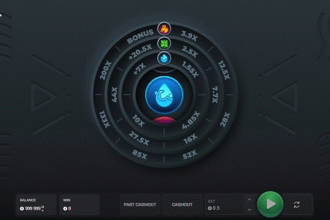In today’s digital age, having a website is no longer a luxury—it’s a necessity. Whether you’re a business owner, blogger, artist, or student, creating an online presence is vital. But what if you don’t know how to code? Enter the HTML Website Builder—a powerful tool that allows anyone to design, build, and publish a website without writing a single line of code.
In this guide, we’ll explore what HTML website builders are, how they work, why they’re useful, and which tools are best for your needs.
What Is an HTML Website Builder?
An HTML website builder is a platform or software that enables users to create web pages using a visual interface rather than hand-coding HTML, CSS, and JavaScript. These builders typically come with drag-and-drop functionality, pre-designed templates, and real-time preview, making the entire process faster and easier.
Some website builders generate clean HTML code in the background, while others offer options to manually edit or export the HTML for advanced customization.
Key Benefits of HTML Website Builders
1. No Coding Skills Required
Perhaps the biggest advantage is that anyone—regardless of technical background—can build a website. Users interact with graphical interfaces to design web pages.
2. Time-Efficient
Website builders significantly reduce the time it takes to build a site. With drag-and-drop features and ready-made templates, users can create a full website in hours rather than days or weeks.
3. Responsive Design
Most modern HTML builders offer responsive templates that look great on both desktop and mobile devices. You don’t need to worry about writing separate code for different screen sizes.
4. Cost-Effective
Hiring a professional web developer can be expensive. HTML website builders offer affordable subscription plans, and some even have free tiers.
5. Easy Customization
From color schemes and fonts to animations and layout sections, you can customize nearly every aspect of your site through intuitive settings.
How Do HTML Website Builders Work?
HTML website builders are typically web-based (like Wix or Webflow) or downloadable software (like Adobe Dreamweaver). Here’s a general overview of how they work:
- Choose a Template – Start with a pre-designed layout that suits your industry or personal taste.
- Customize the Design – Modify text, images, colors, and layout using drag-and-drop tools.
- Add Functional Elements – Incorporate features like contact forms, navigation menus, buttons, and galleries.
- Preview and Optimize – Check how the site looks on desktop and mobile views.
- Publish or Export HTML – Either publish directly through the builder’s hosting platform or export clean HTML files to host elsewhere.
Use Cases of HTML Website Builders
Business Websites
Showcase products, services, contact details, and testimonials. Builders help small businesses launch a polished, professional site in no time.
Portfolio Sites
Artists, designers, and photographers can easily create visually engaging galleries to highlight their work.
Online Stores
With builders like Wix and Squarespace, users can set up a fully functional eCommerce store complete with payment gateways and inventory tracking.
Blogs and Personal Sites
Writers and content creators can maintain blogs with built-in SEO tools, tagging, and social sharing features.
Landing Pages
Marketers can quickly build promotional landing pages for campaigns, product launches, or email signups.
Things to Consider Before Choosing a Builder
- Purpose of Your Website – Is it a blog, a business site, or a store?
- Ease of Use – Do you prefer drag-and-drop or advanced customization?
- Export Options – Do you need access to raw HTML, CSS, or JS?
- SEO Tools – Make sure your builder supports on-page SEO.
- Responsive Templates – Your website should be mobile-friendly.
- Hosting – Some builders include hosting; others let you export the HTML.
Final Thoughts
HTML Website Builder has transformed the way we create websites. They democratize web development by allowing people with zero coding skills to craft professional, responsive, and beautiful websites. Whether you’re building a personal blog or launching an online store, there’s a website builder out there that fits your needs.
So why wait? Pick a builder, choose your template, and start creating your dream website today—no coding required!
FAQs
Q1: Can I use an HTML builder for free?
Yes, many builders like Wix and Webflow offer free plans with basic features and limited hosting.
Q2: Will my site be mobile-friendly?
Most modern builders offer responsive templates that automatically adjust to mobile devices.
Q3: Can I export the HTML code?
Yes, builders like Webflow and Nicepage allow HTML/CSS export, giving you full control.
Q4: Are website builders good for SEO?
Yes, many builders come with built-in SEO tools like meta tags, alt text options, and sitemap generation.

















